Wim Wender’s Paris, Texas has always held a very special place in my heart from as far back as I can remember, and it still does. It’s one of my dad’s favourite films and so was around during my early childhood, and the picture above was the cover of the VHS copy he had. Even at such a young age, this image of Nastassja Kinski was permanently etched into my mind. This still from the film, along with the title, has such an alluring quality, one that’s hard to put into words. It may sound melodramatic, but I fell in love at first sight with the character of Jane through this one image, and I still believe that Kinski as Jane is one of the most beautiful women whose image has ever been committed to celluloid.
It’s an odd coincidence that this Palm d’Or Winner is so nostalgic for me, since it’s also one of the main themes of its narrative. Everything from the plot, the way it’s shot and even the title reflect this. Paris, Texas, is a real place and was used in a joke that the father of our protagonist, Travis, would tell when he was a child. His recurring gag would be to introduce his wife as the girl he met in Paris—then he’d wait until after everybody thought he meant France before he said, “Texas.”
The story begins with Travis walking through the desert to this very place. His clothes are worn out and his hair is overgrown; it’s clear he’s been trekking for some time. This character is brought to life by Harry Dean Stanton in the role he was born to play, and he was quoted as saying it was the part he’d always wanted. He eventually collapses and is found by someone who manages to get in touch with his brother, Walt (Dean Stockwell), who flies out from Los Angeles to southern Texas to pick him up. It’s then revealed that Travis has been missing for four years.
He’s mute, unresponsive, and even tries to wander off again as Walt tries to take him back to his home. Nobody knows what happened to Travis and how he got to this point, but he eventually says that he was on his way to Paris, Texas, because he believes that it is where he was conceived. It’s clear that he’s trying to get in touch with something in his past, as he has lost everything. What’s happened to Travis is such a tantalising mystery, one you may think wouldn’t have such a satisfactory answer. However, it most certainly does…but more on that later.
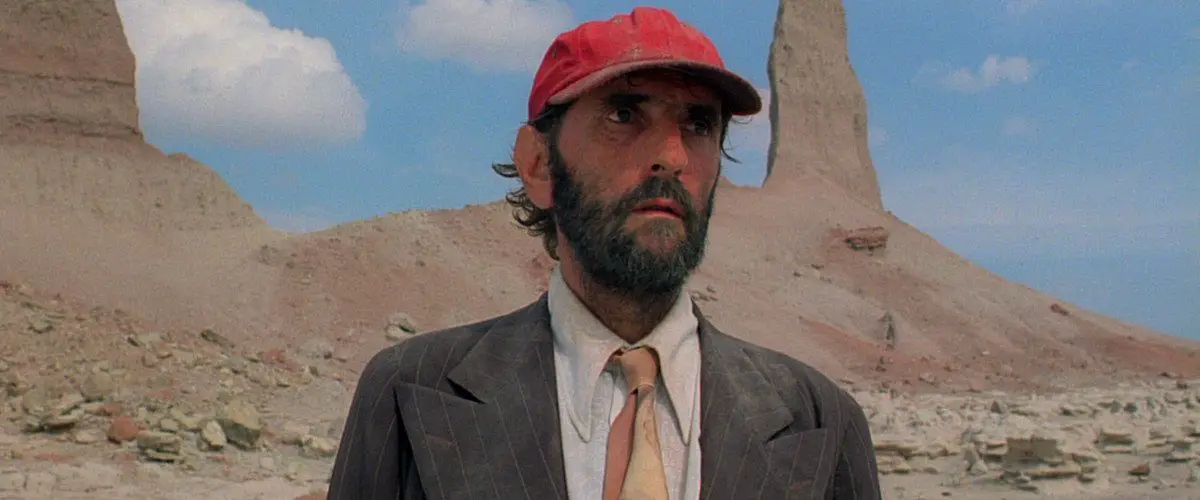
He refuses to fly by plane and forces them to drive all the way to LA instead. Walt is so patient and kind with him that he deserves an award for Best Brother. Travis doesn’t make things easy, either, and has many eccentricities that one assumes is the result of his breakdown. When Walt finally gets him back to his house, he’s reunited with his son Hunter, who’s been in Walt’s and his wife Anne’s care since his disappearance. Perfectly cast in every way, Hunter Carson puts in possibly the best child performance ever and has many great, touching lines of dialogue throughout the film.
Now the story really begins, as Travis tries to reconnect with his son after being absent for so long. This brings us to the other main theme of the film: redemption. It takes time, as it should, for Hunter to begin to feel comfortable with him. When Travis tries to pick him up from school the first time, he instead opts to get a ride from another parent, leaving him standing across the road. The next attempt turns into an endearing moment where he has dressed up in a suit to look more like a father, and he and Hunter walk together on opposite sides of the road.
Travis’ motivations for reconciliation, aside from the obvious, are unclear at this point. Even the obvious ones are not a given, though, as the only reason that he‘s present is because Walt dragged him there. It won’t be until the final moments of the story that this will become clear. One of the most poignant parts of the film is when Walt shows them a home video of when he and Anne went to visit Travis, about a year or so before his disappearance. This is the first time we see Jane; Hunter’s mother. As previously mentioned, she’s beautiful, and the three of them seem very happy together. Just seeing this footage clearly has a profound effect on Travis and also instantly warms Hunter to him.
The video was shot using Super 8 film, which accentuates the feelings of loss and nostalgia. It also deepens the mystery as to what happened in the years between then and now that led to their separation and Travis’ breakdown. Eventually, he and Hunter make a spontaneous decision to hit the road to find Jane, despite how upset Anne gets when she finds out. Walt consoles her but believes they have to let Hunter reconnect with his father and mother. The way she pleads with Hunter on the phone, coupled with the way she pronounces his name with her lovely French accent, is heartbreaking but necessary; Anne is such a darling, and she’s come to think of Hunter as her own child.
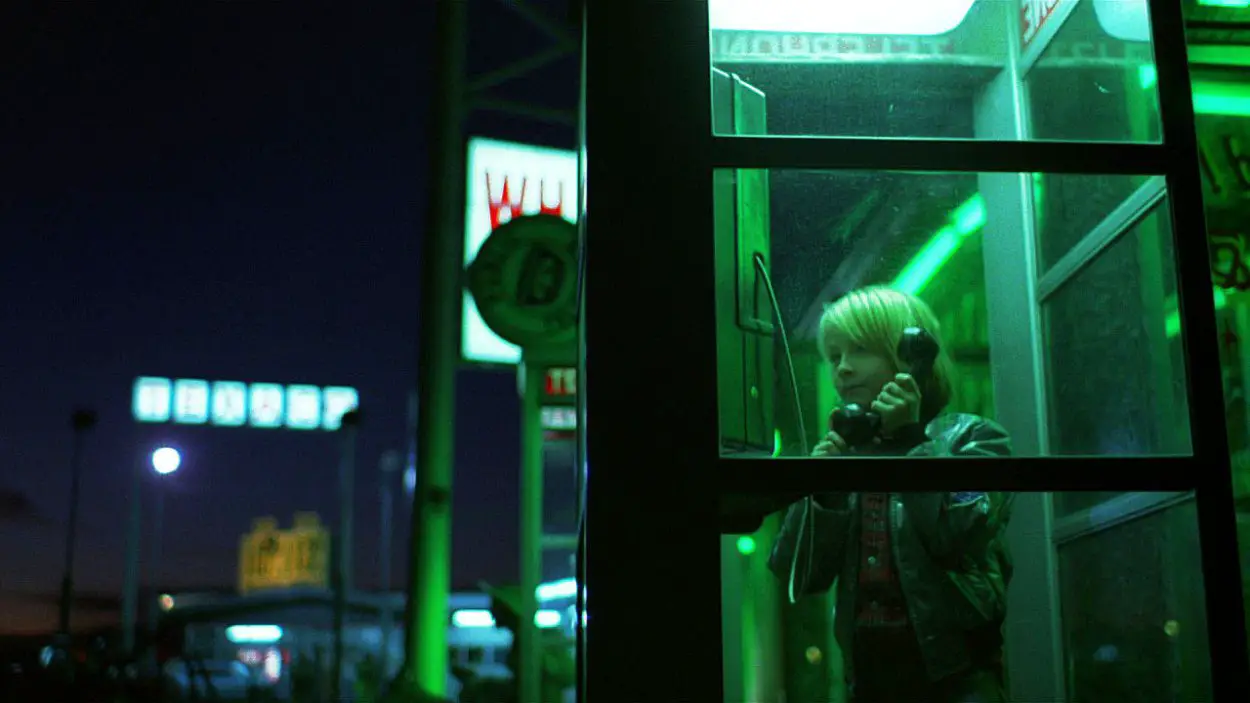
The film shifts gears into a road movie again, but now one with a deep purpose. There are many touching moments between them on the journey, in front of the most beautiful backdrops of magically lit desert landscapes and beautifully desolate towns. The sparse surroundings reflecting the family’s state of separation. I cannot be too complimentary about the cinematography of the film provided by Robby Müller. The visuals alone elevate it to a work of art, but when coupled with an exquisite score by Ry Cooder, it becomes something very special indeed. The title track is a perfect slice of longing Americana—a genre I’m not particularly fond of—but the song is deeply moving nonetheless, showing how effective the score is.
They stake out a location that Jane has been using to send money on the same date every month to Anne for Hunter. When they spot her, they chase her to a private club. The place is questionable, as the entrance is through a back alley. Travis finds her inside, but she has her back to him, and he’s ushered off by a shifty-looking guy just before Jane looks over her shoulder (which is where we get the iconic image from the start of the article). This moment carries so much weight, as she’s been built up to the status of a mythical creature throughout the film. Jane is the axis of the whole story and has been talked about by every character, yet we have only seen her briefly in a hazy home video.
She hasn’t seen Travis yet, and he discovers that this club has private booths with one-way glass. He takes this perfect opportunity to talk to Jane without her being able to see who he is. Travis can’t bring himself to look at her at first for some time, covering his eyes with his hand and just listening to her speak over the intercom. The shot of Jane when she’s revealed is perfection, standing provocatively in the doorway of the room, unaware of whom she’s flirting with. He’s not prepared to confront her, and the conversation amounts to little before his jealousy starts to rise to the surface. He questions to what extent she goes to with her customers, apologises, and leaves abruptly.
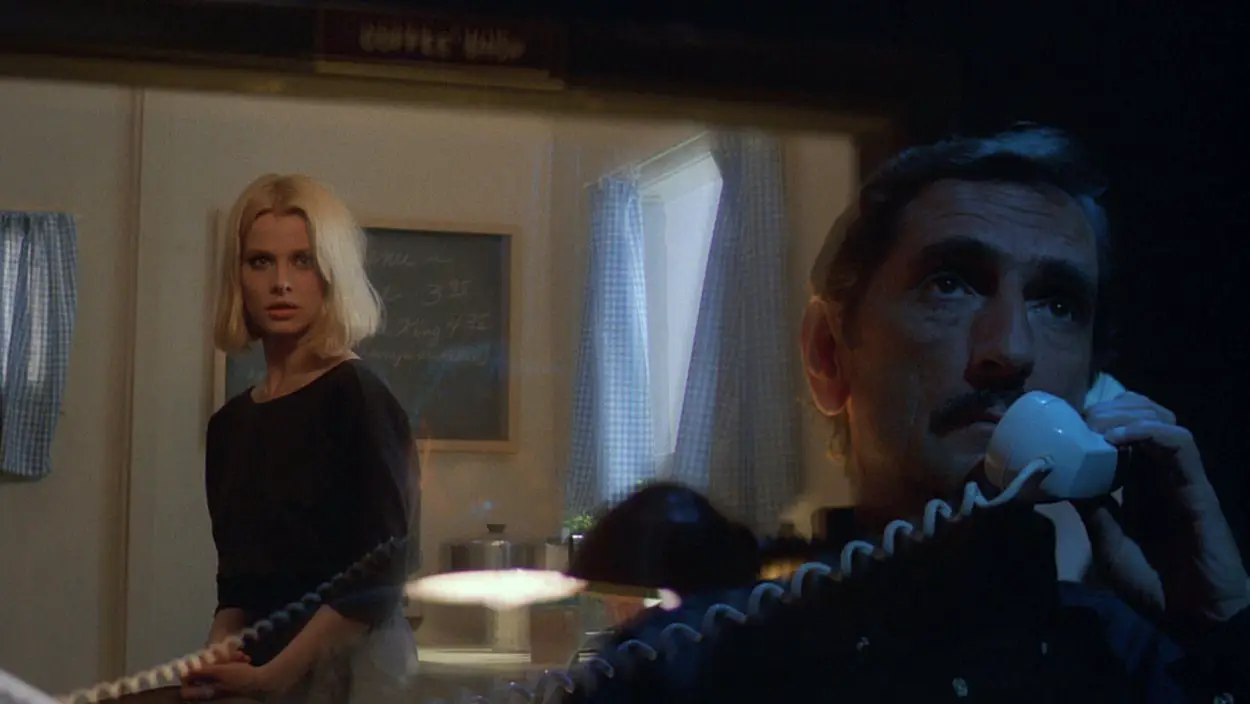
Travis prepares himself physically and emotionally for his next visit. He recounts the story of their relationship, in one of the most well-written, powerful scenes. It has more impact than most entire films; credit here goes to L.M. Kit Carson (father of Hunter Carson) for some of the best dialogue ever written. The expressions on Jane’s face as she slowly realises who she’s talking to is nuanced and realistic. Her thick Texas accent adds to her naivety as she asks questions throughout the tale. Travis’ story is fraught with obsession, alcoholism, and a lack of trust on his part; he even has to turn his back to her as he recounts it, out of shame and sorrow. Given how stunning and alluring Jane is, it isn’t hard to believe that this would be a problem for an older man in their relationship.
He goes on to say in great detail how his insecurities and her being so young and unprepared for motherhood pushed her to a breaking point. Jane’s desire to escape and the horrific ways he tried to prevent her led to a fire and her running away with Hunter. We know that she left Hunter with Anne and Walt; this was also the start of Travis’ wandering in the wilderness, having lost everything. It’s such a rare thing, to see a couple being so brutally honest with each other. This may be due to the length of time that has passed, the comforts of the perfect circumstances that they’re talking in, or because Travis knows their son hangs in the balance—or a combination of all of the above.
Whatever their motives, this scene is like having the privilege to be a voyeur to the best couples counselling session that’s ever occurred, where barriers are broken down and each of them is vulnerable. The tragic irony is Jane’s revelation that one of the reasons she works in such a seedy place is because she couldn’t remember him anymore and instead hears his voice in all the men she speaks to there. To realise that their immaturity separated them, even though they clearly still have so much love for each other, is devastating. After each has said their piece, Travis tells her that Hunter is waiting for her in a hotel room downtown, and she is overwhelmed to hear that he wants to see her.
This is his true purpose: to bring Jane back together with their son. If this were your typical American movie, he would have been there with them as they reunited, and they all would have lived happily ever after. However, this is a proper film, and one in which Travis shows great self-control, knowing that what he did was unforgivable and that the greatest tragedy of his actions was separating a mother from her child. He watches from the corner of the street and can see them embrace through the floor-to-ceiling windows of the hotel.
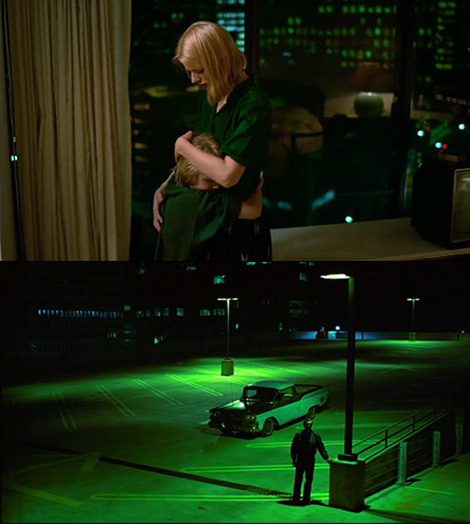
It’s one of the most moving scenes, especially when Hunter sees Jane and, having long blonde hair like his mother, moves it back from his face in the same way she does. He embraces her without a word spoken, and it gets me every time. I can count on one hand the amount of times films move me to tears, but this is always one of them. There’s nothing remotely contrived about this reunion; you feel as if you’ve just witnessed a perfect, real-life moment. After seeing this, Travis drives off into the night, knowing he’s a real human being again and a real hero.
The film is a commentary on the American Dream, framed with pure Americana. the compelling kind that exists in its own world and that few filmmakers can create. David Lynch is the director who can capture it best, and it’s no coincidence that two of the lead actors in Paris, Texas are longtime collaborators of his: Dean Stockwell and Stanton, who was also a close friend of his up until his death at 91 years of age. Lynch also appears in one of Stanton’s final films, Lucky. You could say that it’s a spiritual sequel to Paris, Texas, as the characters Stanton play in both are very similar and could arguably be one and the same.
One of the only other films that I think captures this spirit as effectively is Paolo Sorrentino’s This Must Be the Place, which just so happens to have a cameo by none other than…Harry Dean Stanton. Coincidence? I think not. It’s also funny how Wenders and Sorrentino, a German and Italian filmmaker, respectively, capture Americana in a much more stylish and succinct way than most Americans are able to. Wenders in particular has created a visual masterpiece characteristic of its setting with Paris, Texas, and all of the other elements that come together to make it so compelling just make the film even more astounding. When you find out that it wasn’t storyboarded or rehearsed, shot in chronological order in five weeks and the script was written as they went along, it just makes it even more impressive. It goes to show what can come from a raw, purely creative process.
Not many characters in films take responsibility to the extent that Travis does. His arc is so satisfying, one that you wish more characters would traverse. It’s an arc that Ryan Gosling’s character in Drive has striking similarities to, and I’m sure that Paris, Texas was a key inspiration for Nicolas Winding Refn when making that film. The idea of having the moral fortitude to save a mother and son but know they will be better off without you is inspirational. To see someone come back from oblivion and piece back together what he destroyed is cathartic and gives hope to humanity. Stanton is perfect to play the attractive older man who’s eccentric, yet humbled by his past. His journey also takes place with a backdrop that perfectly captures the period of the mid-‘80s, which forever encases it as a time capsule that contains a perfect story.
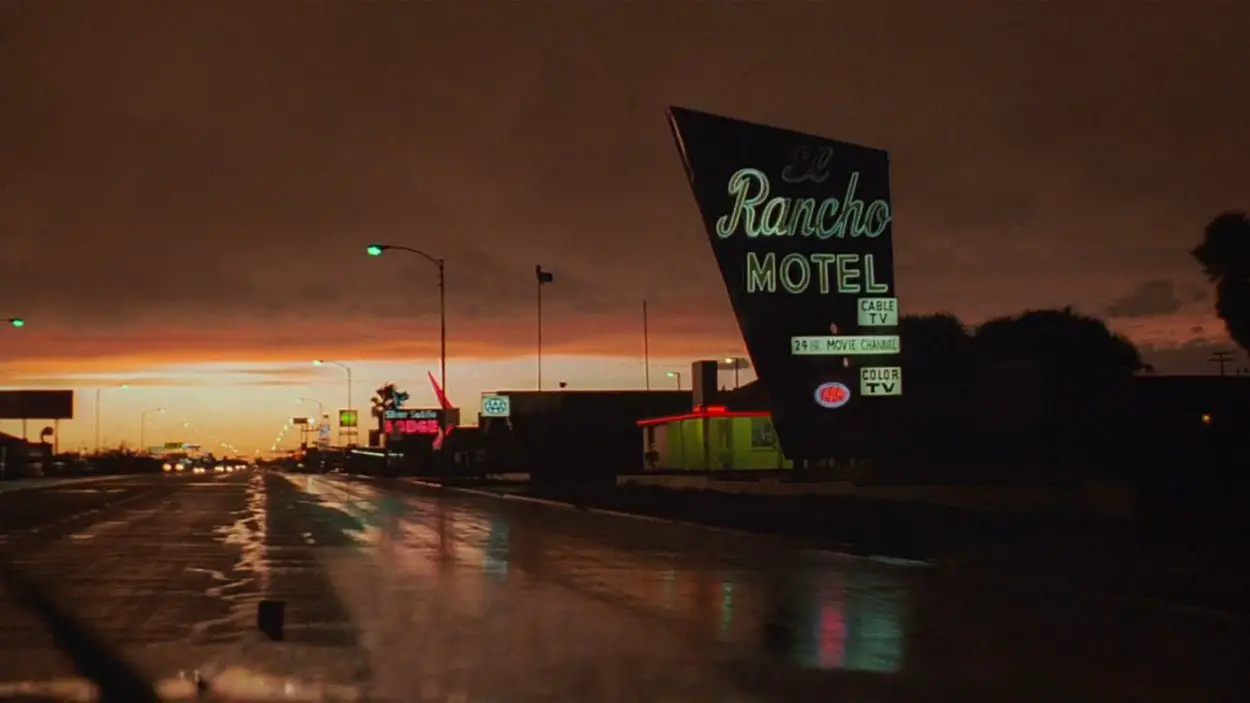




I happened upon this review and website and now this comment box regarding the movie Paris, Texas. I was in my late twenties when I saw it in a theatre in Berkeley, California, where I was working as a teacher. It is a great movie, and Simon did a great job with his review of it. Now, sometimes I have Mexicans as my students, and I thought for a treat I would play the song that is only in Spanish. I understood a few words, but not much. I was teaching ESL at the time to adults. It was a night class, whereby working adults to attend to learn English. I started playing the song and within a minute or so I saw my Mexican students, adults all, begin to weep, for the song’s lyrics are about being separated from their homes to work in America. A very sentimental, nostalgic song. When the song was over, they shared with me the song’s lyrics and themes and I felt very awkward, for they had wept. They stated that it was a great song, and a great emotional release for them. Over the years I have thought about the predicament of immigrants; rarely welcomed, they emigrate for survival usually; there is simply no income for them in their native country, or they’ve been forced to emigrate due to war, climate disasters, etc. Many die making the move. Some get imprisoned to teach others a ‘lesson’. What is the lesson; don’t try to survive. I write these words on November 8th, 2021 and unwanted immigrants (by half or more of Americans) are a hot topic. Worldwide, as climate change ruins more and more environments forcing emigration, this issue will only exacerbate. We all share the same planet is merely a platitude as national tribalism increases. I am very pessimistic about humans coming together to solve urgent climate issues and their consequences; uninhabitable areas of earth, massive emigrations, violent clashes at borders, massive casualties. But perhaps something like a miracle will happen in the next few years; I see no way of survival without it. Duane Flanigan
Wow! What an experience. Not many people can say they’ve experienced that, I’m envious
It’s interesting. I thought of this film randomly a couple of weeks ago. I went to a premier for it at The State Theater in Cleveland. Harry Dean was there, and took the stage before the film started. He talked about how great Ry Cooder was, and the sang and played a harmonica, unaccompanied. Then they rolled the film. Sam Shepard may have been there too. A very moving film, although I was too young to truly appreciate its themes at the time.